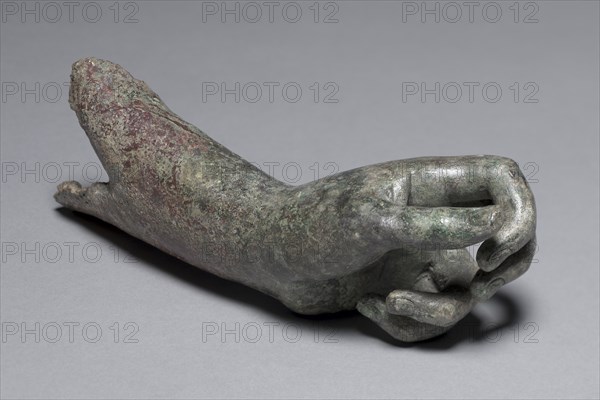
Sujet
Apollo the Python-Slayer, c. 350 BC. Creator: Praxiteles (Greek, c. 400BC-c. 330BC), attributed to.
Légende
Apollo the Python-Slayer, c. 350 BC. Since antiquity Praxiteles?s masterpiece has been known as "Sauroktonos" (Lizard-Slayer). Pliny the Elder almost certainly saw the bronze original in Rome in the first century AD. He described a young Apollo about to stab a lizard with an arrow. Roman marble copies seemed to support this identification because they included lizards clinging to thick tree trunks. Until the acquisition of the only known bronze version by the Cleveland Museum of Art in 2004, there was no reason to question Pliny?s epithet. The Cleveland Apollo's "lizard," which is probably original to the sculpture, is not a lizard at all. It combines the body of a snake with strangely formed limbs of varying sizes joined asymmetrically to the body. Its disordered anatomy identifies it as an agent of chaos from the world of myth. It is most likely the Python, son of Mother Earth, who Apollo must slay to become the presiding deity at the Delphi sanctuary. The Cleveland Apollo can therefore be called a Python-Slayer, and "Sauroktonos" was perhaps a popular nickname for the famous bronze original.
Crédit
Photo12/Heritage Images/Heritage Art
Notre référence
HRM19F69_413
Model release
NA
Property release
NA
Licence
Droits gérés
Format disponible
43,4Mo (1,9Mo) / 40,4cm x 26,9cm / 4772 x 3182 (300dpi)